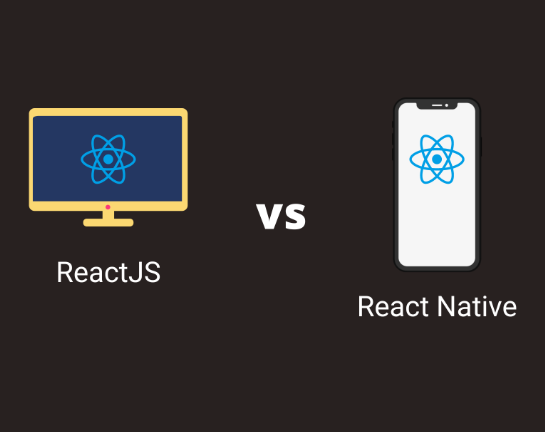React vs React Native: Pros, Cons, and Key Differences
 Sigma Solve
Sigma Solve
React and React Native are two popular technologies developed and maintained by Facebook. While both are used for creating user interfaces, they serve different purposes and target different platforms. Understanding the pros, cons, and key differences between React and React Native is essential for making informed decisions in web and mobile app development.
Definition of React and React Native
React is a JavaScript library for building user interfaces, primarily used for web development. It allows developers to create reusable UI components and efficiently manage the application's state. On the other hand, React Native is a framework for building native mobile applications using JavaScript and React. It enables developers to write code that can be used across different platforms, such as iOS and Android.
Purpose of React and React Native
The main purpose of React is to provide a flexible and efficient way to build interactive user interfaces for web applications. React Native, on the other hand, aims to enable the development of native mobile applications using familiar web development technologies.
Brief history of React and React Native
React was first released by Facebook in 2013, and it has since gained widespread adoption in the web development community. React Native was introduced by Facebook in 2015 as an extension of React, to bring the same principles of component-based UI development to mobile app development.
React Pros
1. Virtual DOM for improved performance
React uses a virtual DOM to efficiently update the UI, resulting in better performance compared to traditional DOM manipulation.
2. Reusable components for efficient development
The component-based architecture of React allows for the creation of reusable UI elements, leading to faster and more maintainable development.
3. One-way data binding for predictable data flow
React's unidirectional data flow simplifies data management and makes it easier to understand how data changes over time.
4. Strong community support and extensive documentation
The React community is active and provides ample resources, including documentation, tutorials, and libraries, to support developers.
5. SEO-friendly due to server-side rendering
Server-side rendering in React enables better search engine optimization by delivering pre-rendered HTML to web crawlers.
Examples:
SEO-friendly: React's ability to render content on the server makes it suitable for SEO. For instance, Netflix: https://www.netflix.com/ utilizes React to deliver a performant and SEO-friendly web experience for users searching for movies and TV shows.
Reusable components: Reusable components promote faster development and easier maintenance. Facebook: https://www.facebook.com/ leverages React's component-based architecture to build and manage its dynamic and interactive web interface.
React Cons
1. Steeper learning curve for beginners
Developers new to React may find its concepts, such as JSX and virtual DOM, challenging to grasp initially.
2. JSX syntax may be unfamiliar to some developers
JSX, a JavaScript syntax extension used in React, may be unfamiliar to developers accustomed to separating HTML from JavaScript.
3. Requires additional libraries for state management (e.g., Redux)
While React provides state management through component state, more complex applications may require additional libraries like Redux for centralized state management.
4. Limited support for mobile app development
React is primarily focused on web development, so mobile app development with React alone may have limitations.
Key Differences from React Native
1. Primarily used for web development
React is mainly used for building user interfaces for web applications.
2. Utilizes web technologies such as HTML, CSS, and JavaScript
React leverages web technologies to create interactive UI components for web applications.
React Native Pros
1. Cross-platform compatibility for iOS and Android
React Native allows developers to write code once and deploy it across multiple platforms, saving time and effort.
2. Faster development with hot reloading feature
The hot reloading feature in React Native enables real-time code changes to be reflected instantly in the running application, speeding up the development process.
3. Access to native modules for device-specific functionalities
Developers can access native modules and APIs directly from React Native to incorporate device-specific features into their applications.
4. Code reusability across different platforms
With a single codebase, developers can create apps for both iOS and Android platforms, reducing duplication of efforts.
5. Support for third-party plugins and libraries
React Native offers a wide range of third-party plugins and libraries that extend its capabilities and provide solutions for various app requirements.
Examples:
Cross-platform development: React Native enables code reuse across platforms. Instagram: https://www.instagram.com/ is a prime example, where a significant portion of the codebase is shared between the iOS and Android versions of the app.
Faster development: Hot reloading in React Native allows for quicker development cycles. Skype: https://www.skype.com/ uses React Native to streamline development and deliver a seamless experience on mobile devices.
React Native Cons
1. Performance may not match native app development
While React Native offers native-like performance, it may not always match the performance of fully native app development, especially for highly complex applications.
2. Limited access to certain native features
Some platform-specific features may not be readily accessible in React Native without additional native modules or custom implementations.
3. Larger app size compared to native apps
Apps built with React Native may have larger file sizes compared to fully native apps due to the inclusion of the JavaScript engine and framework components.
4. Platform-specific debugging and testing requirements
Debugging and testing in React Native may require platform-specific tools and approaches due to differences between iOS and Android.
Key Differences from React
1. Primarily used for mobile app development
React Native is specifically designed for creating native mobile applications for iOS and Android platforms.
2. Utilizes native components and APIs for iOS and Android
Unlike React, which primarily uses web technologies, React Native leverages native components and APIs for building mobile user interfaces.
Comparison
Similarities
1. Developed and maintained by Facebook
Both React and React Native are developed and maintained by Facebook, ensuring ongoing support and updates from a reputable source.
2. Based on the concept of component-based architecture
Both technologies embrace the concept of building UIs through reusable components, promoting modularity and reusability.
3. Support for third-party packages and extensions
Both React and React Native ecosystems offer a wide array of third-party packages and extensions to enhance functionality and streamline development.
Differences
1. Target platforms (web vs mobile)
The primary target platform for React is web development, while React Native is focused on mobile app development for iOS and Android.
2. Use of native components and APIs
React primarily uses web-based components, whereas React Native utilizes native components and APIs specific to mobile platforms.
3. Performance considerations
While both technologies aim to deliver high performance, the nature of web and mobile environments introduces different performance considerations.
Final Thoughts
Considerations for choosing between React and React Native
When deciding between React and React Native, developers should consider the specific requirements of their project, including target platforms, performance needs, and available resources.
Potential for using both technologies in a single project
In certain scenarios, using both React for web interfaces and React Native for mobile applications within the same project can offer advantages in terms of code sharing and developer expertise.
Future developments and advancements in React and React Native
As technology continues to evolve, both React and React Native are expected to undergo further advancements, addressing current limitations and expanding their capabilities to meet the changing demands of modern application development.
In conclusion, understanding the strengths, weaknesses, and distinctions between React and React Native is essential for making informed decisions when embarking on web or mobile app development projects. By leveraging the unique features of each technology, developers can effectively address the specific requirements of their applications while benefiting from the support of vibrant developer communities and ongoing advancements in these versatile frameworks.
Subscribe to my newsletter
Read articles from Sigma Solve directly inside your inbox. Subscribe to the newsletter, and don't miss out.
Written by

Sigma Solve
Sigma Solve
Recognized as a front-runner in AI and Digital Transformation, Sigma Solve, Inc. has secured its place on the 2023 Inc 5000 America’s Fastest Growing Companies at No. 2021, up from No. 2077 in 2022. For more than 15 years, the company has solidified its position as a trailblazer utilizing emerging technologies. Its accomplished team of 200+ engineers has successfully delivered more than 1000 projects and caters to over 150 clients with a >90% retention rate.